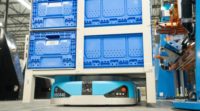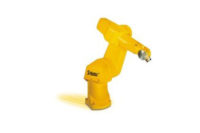Source: Amazon Introducing Warehouse Overhaul With Robotics to Speed Deliveries by Sebastian Herrera
A few weeks ago, Amazon.com announced introducing an array of new artificial intelligence and robotics capabilities into its warehouse operations that will reduce delivery times and help identify inventory more quickly. The revamp will change the way Amazon moves products through its fulfillment centers with new AI-equipped sortation machines and robotic arms. It is also set to alter how many of the company’s vast army of workers do their jobs.
Amazon says its new robotics system, named Sequoia after the giant trees native to California’s Sierra Nevada region, is designed for both speed and safety. Humans are meant to work alongside new machines in a way that should reduce injuries, the company says.
It is unclear how the new system will affect Amazon’s head count, and the company declined to provide details about its expectations except to note that it doesn’t see automation and robotics as vehicles for eliminating jobs.
Sequoia enables the company to put up items for sale on its website faster and be able to more easily predict delivery estimates, said David Guerin, the company’s director of robotic storage technology. The new program reduces the time it takes to fulfill an order by up to 25%, the company said, and it can identify and store inventory up to 75% faster. Amazon launched the system this week at one of its warehouses in Houston.
“The faster we can process inventory, the greater the probability that we’re going to be able to deliver when we said we could,” Guerin said. He said Amazon expects the new system to make up a significant portion of the company’s operations in the next three to five years.
Faced with fresh competition in the U.S., Amazon has worked to become faster at delivering its products. The company transformed its operations to a regionally focused model meant to store items closer to customers, The Wall Street Journal previously reported. Executives see a connection between delivery speeds and growth.
In the new structure, vehicles transport products inside tote containers to a new sortation machine equipped with small robotic arms and computer vision. From the sortation machine, the bins are routed to an employee who picks items for delivery. Remaining inventory is consolidated by Sparrow, a robotic arm Amazon unveiled last year.
In the previous system, vehicles moved around Amazon products, but the new sortation machine, tote containers and Sparrow weren’t involved. Previously, employees might have to reach high up on a shelf to pick a heavy item, but now the new system delivers containers around the waist level, with a goal to reduce injuries.
Amazon is among several companies that have chased what is known as the “holy grail” of robotics, or machines as dexterous, quick and adaptable as a human arm and hand. Rivals such as Walmart are changing jobs of moving boxes into roles managing robotic arms.
What Amazon and others have realized is that in order to integrate more robotics, the workflow of warehouses has to be transformed, said Rueben Scriven, research manager at market research firm Interact Analysis. Amazon’s new system, for example, makes sense for its robotic arms because such robots have an easier time identifying objects inside of bins than shelves, which have been a part of previous Amazon systems.
“The key thing Amazon is trying to do is integrate,” Scriven said. “They have the different pieces, and now it’s about, ‘How do we bring them together in a harmonious system?’”
Labor researchers and activists have said Amazon’s desire for faster speeds can put its workers at risk, and some have warned that the introduction of robotics could also heighten employee injuries. The company has long struggled with high turnover among its warehouse employees and repetitive stress injuries.
With new systems such as Sequoia, Amazon says it is trying to improve safety. Tye Brady, chief technologist at Amazon Robotics, said the company’s robotics are meant to eliminate mundane tasks and work alongside its human staff, with both needing each other to work efficiently. Amazon has introduced various robotics into its warehouses over the past decade but maintained large hiring sprees for human workers.
Amazon’s delivery strategy has also centered on opening facilities focused on delivering popular products to customers in less than a day. The company has launched dozens of the “same-day” sites, with plans for more expansion. Guerin, the robotics storage director, said Amazon’s plans for Sequoia include the same-day sites.
Aside from trying to get faster, Amazon also restarted a shipping business that competes with United Parcel Service and FedEx by handling external deliveries, and it has also worked to eliminate packaging throughout its network. Amazon said it would also start to test a bipedal robot named Digit in its operations. Digit, which is designed by Agility Robotics, can move, grasp and handle items, and will initially be used by the company to pick up and move empty tote containers.
The retailer has one of the nation’s largest workforces, employing hundreds of thousands of employees across its warehouses. It has also increasingly introduced robotics into its operations. The company bought Kiva Systems in 2012 for $775 million, bringing in mobile robots into its facilities that became a staple of its operations.
In 2022 it announced a $1 billion fund for innovation in logistics and supply chain, with Agility Robotics being among the fund’s first recipients. And the same year, it unveiled Sparrow, which can pick up a variety of objects as easily as humans can.





